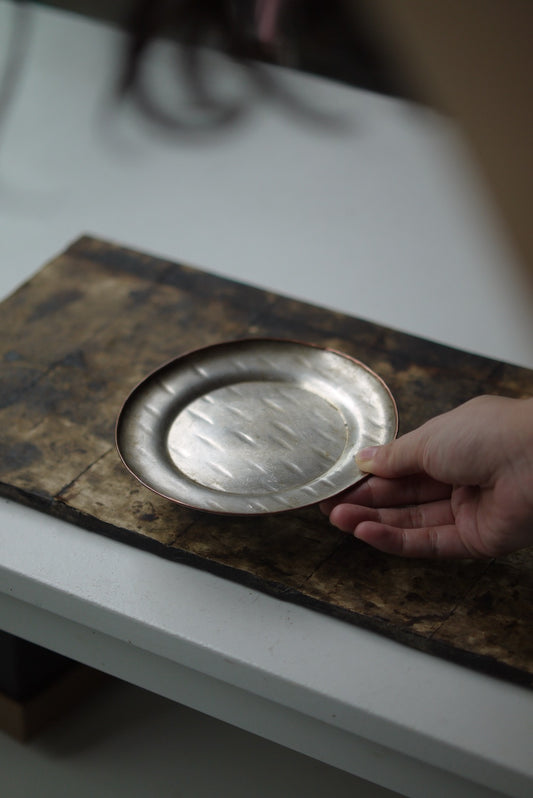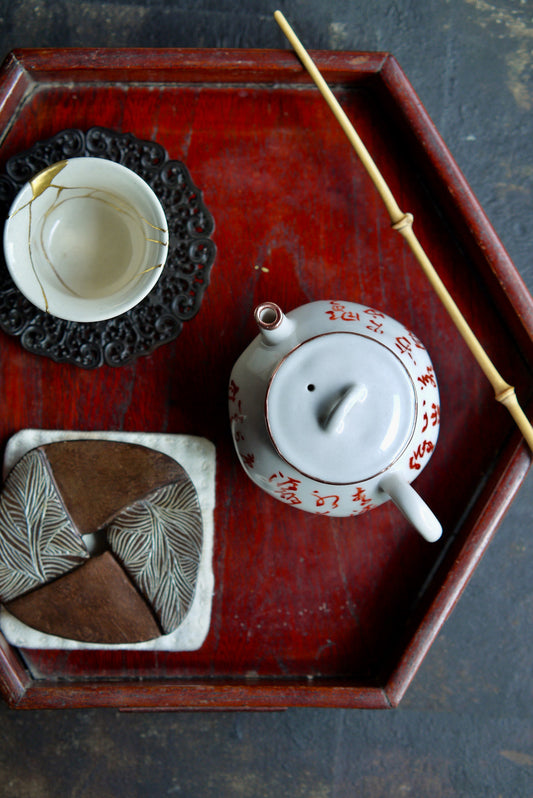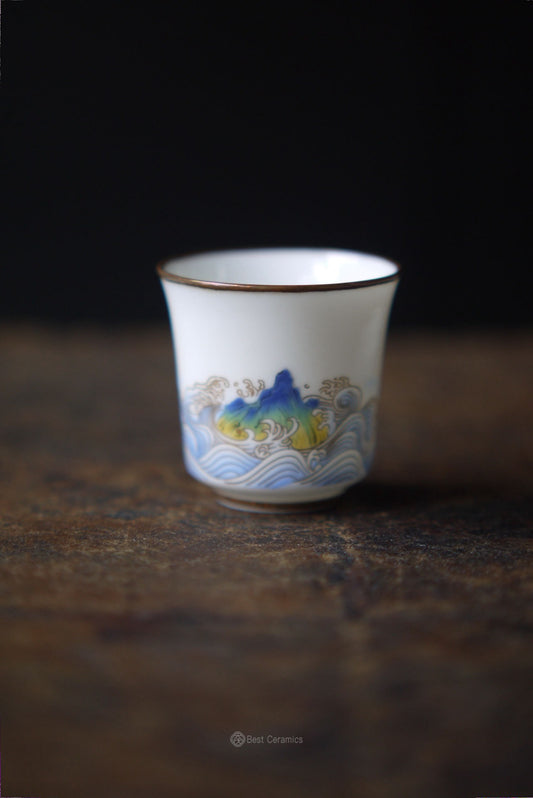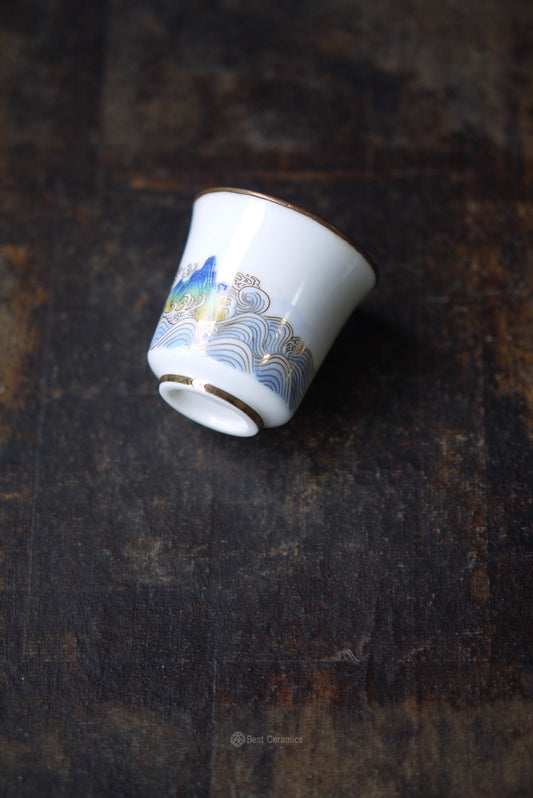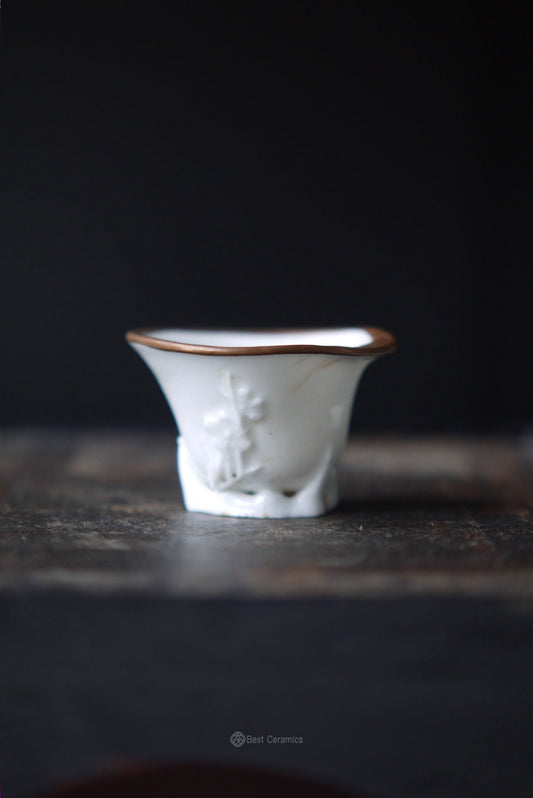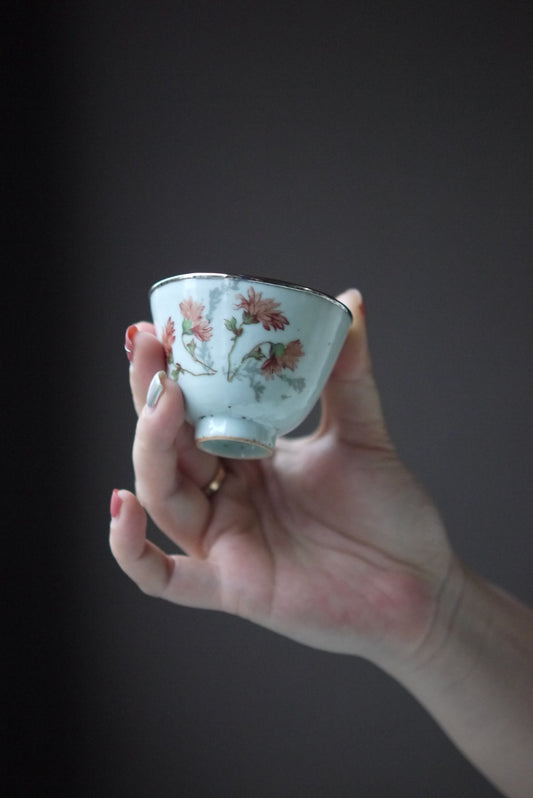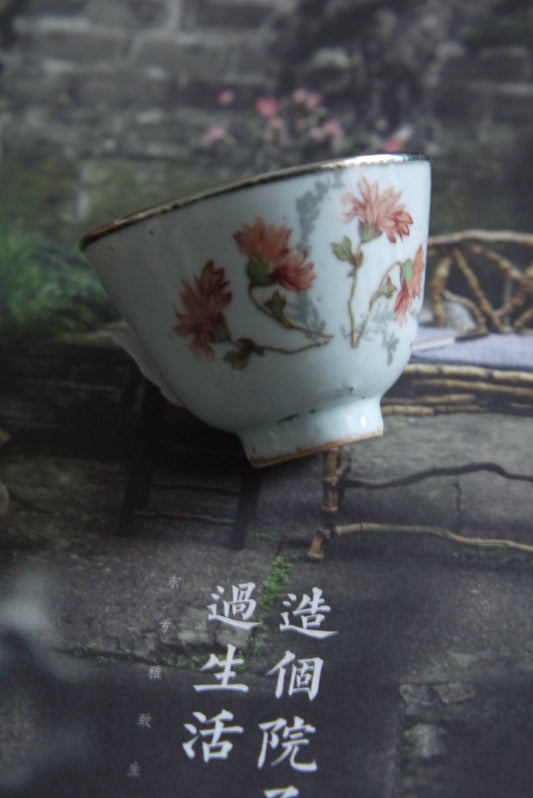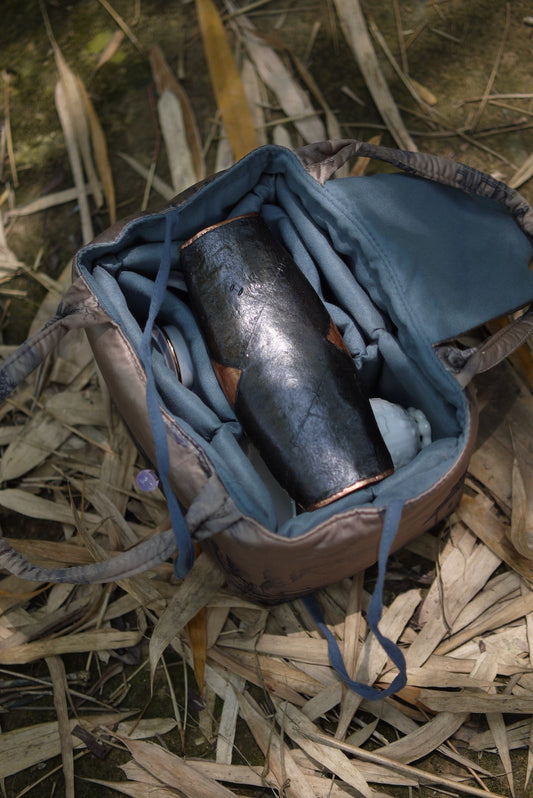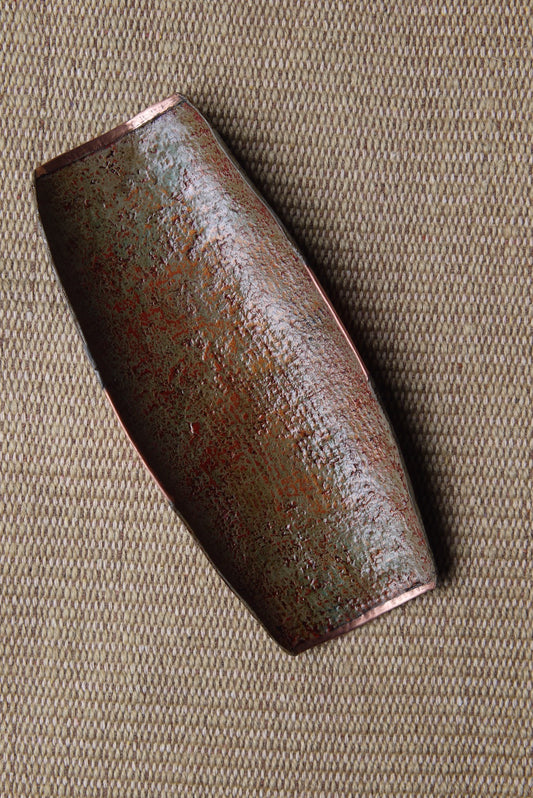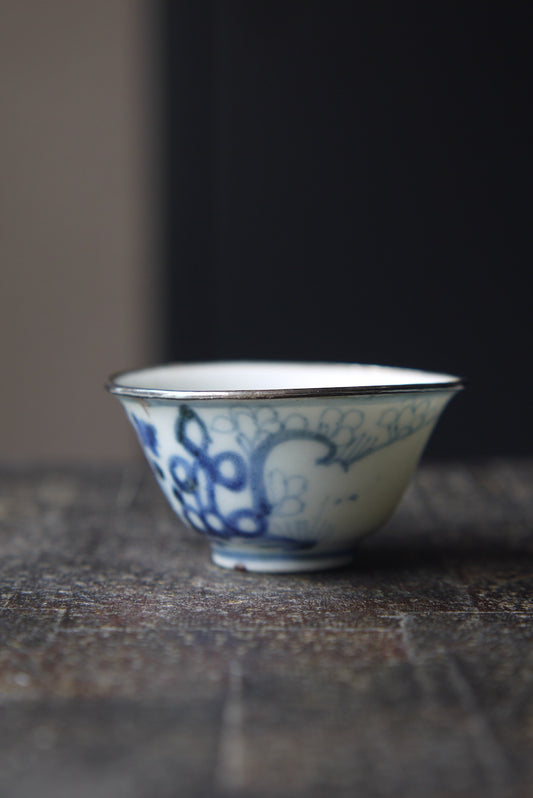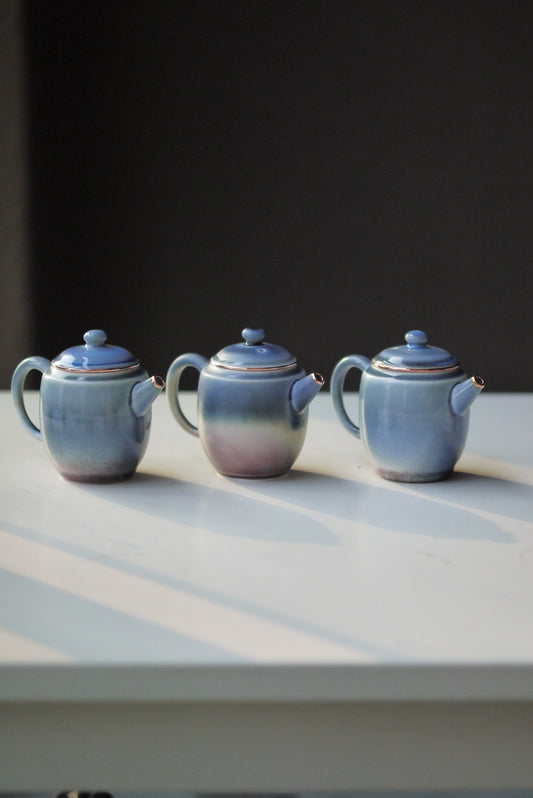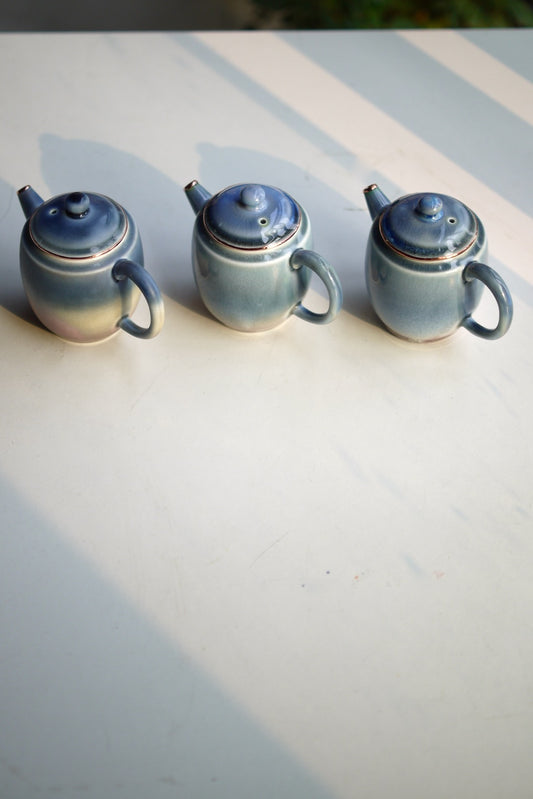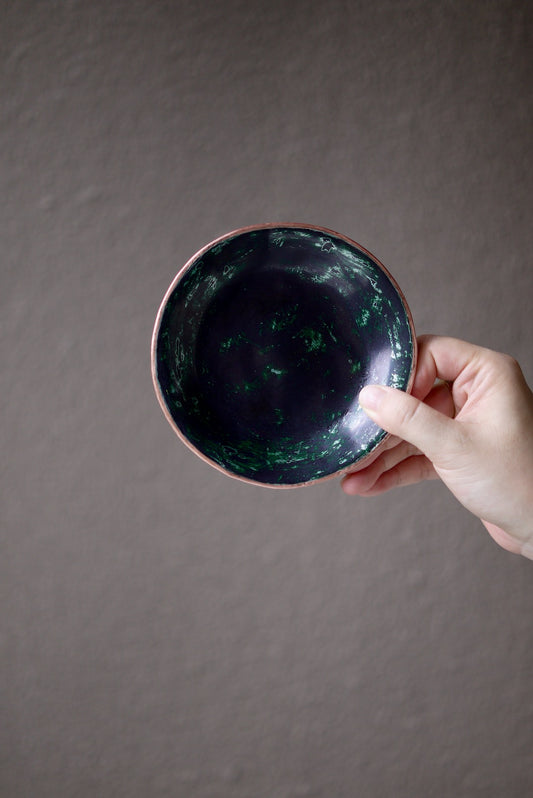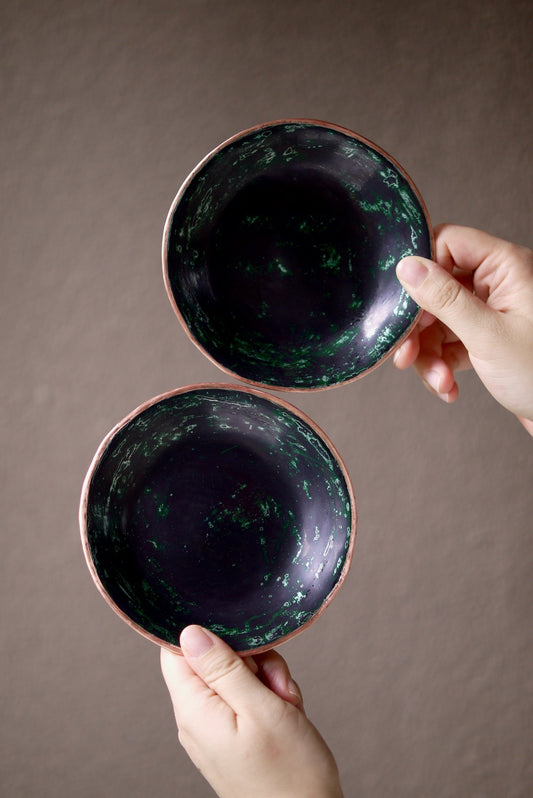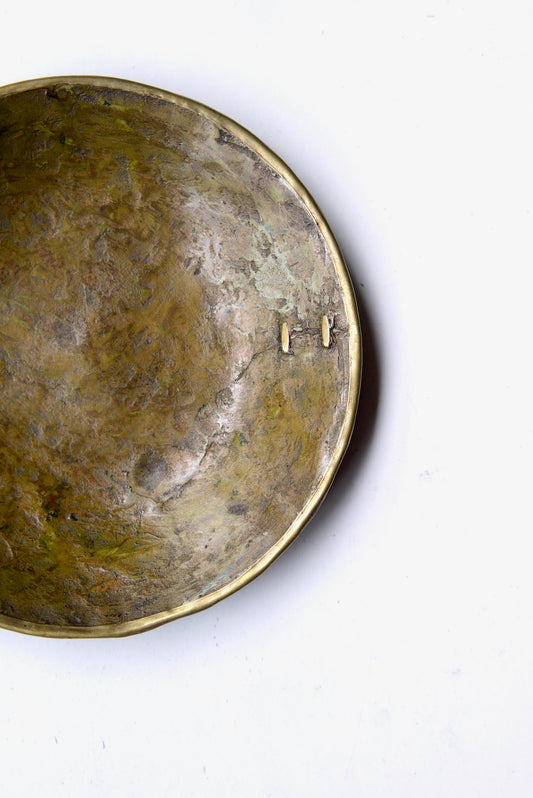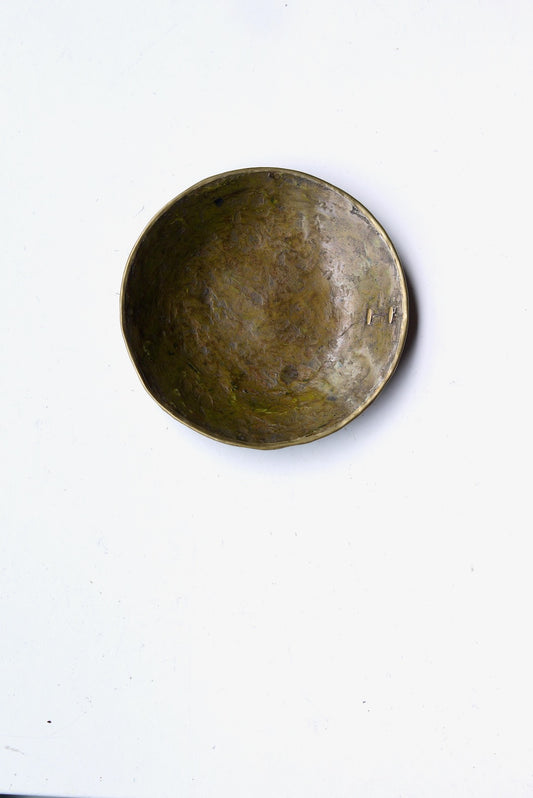
Purchase Trigger Line
With KOU, a teacup becomes more than a vessel—it becomes a companion to your lifestyle.
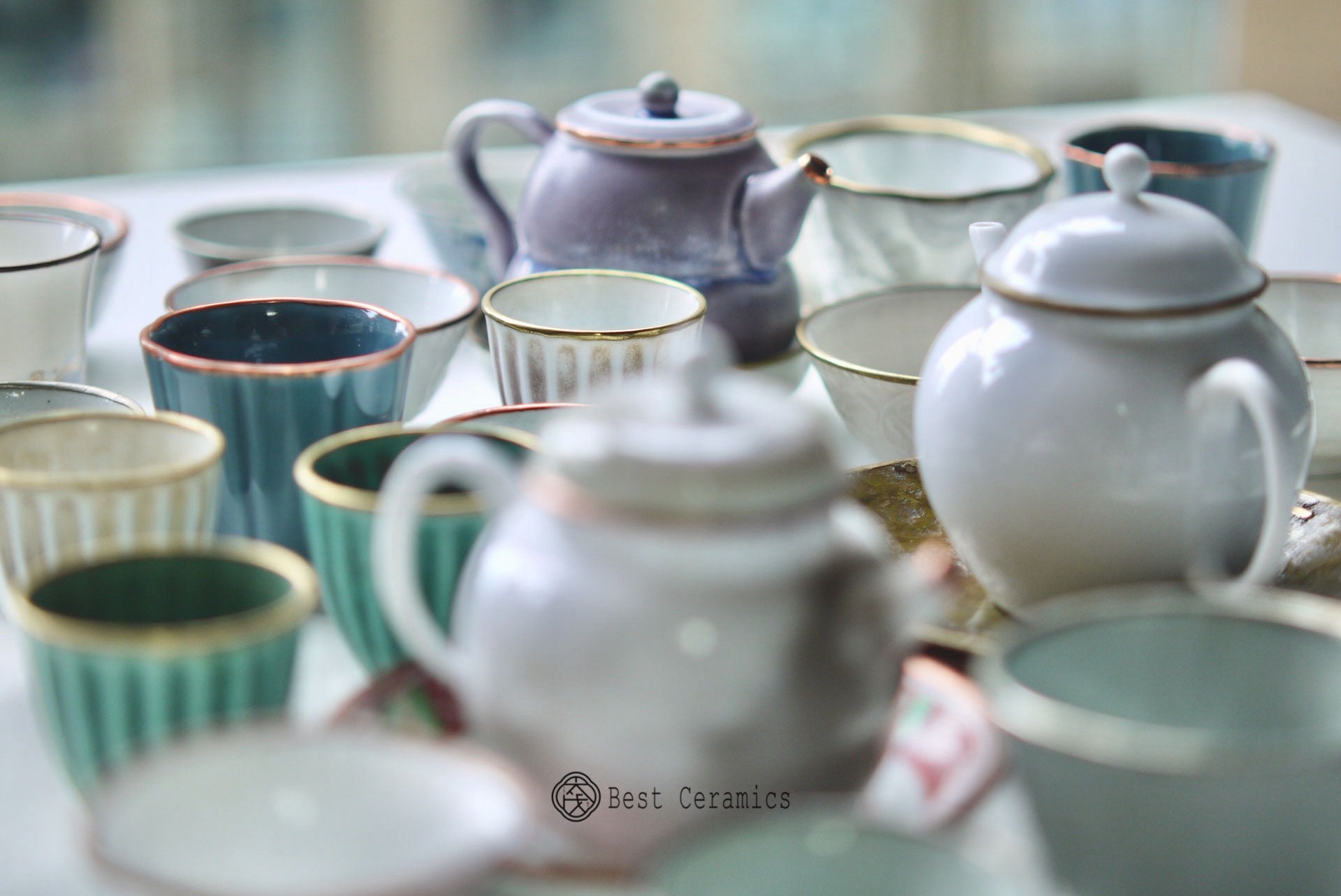
What's Kou?
"Kou" is an ancient Chinese technique that wraps metal around ceramic rims for protection and beauty. Originating in the Han dynasty, it evolved into an intricate art form.
The Meaning of KOU — A Way to Continue Life With Your Teaware
KOU is not repair—it is renewal. When a rim is embraced with gold, silver, or copper, the piece becomes a symbol of time, resilience, and continuity. Rooted in traditional Chinese kintsugi craftsmanship, KOU preserves beauty through imperfection and brings a serene presence to your tea table. This quiet elegance reflects the lifestyle Taiwu Gallery curates on best ceramics.
Beauty You Can Feel and Understand
-
Aesthetic upgrade
The metal rim adds elegance and collectible value.
-
Improved tactile feel
The touch of metal makes holding the cup more secure and pleasant.
-
Enhanced durability
The rim reinforcement reduces chipping and keeps your favorite teacups safe for years.
-
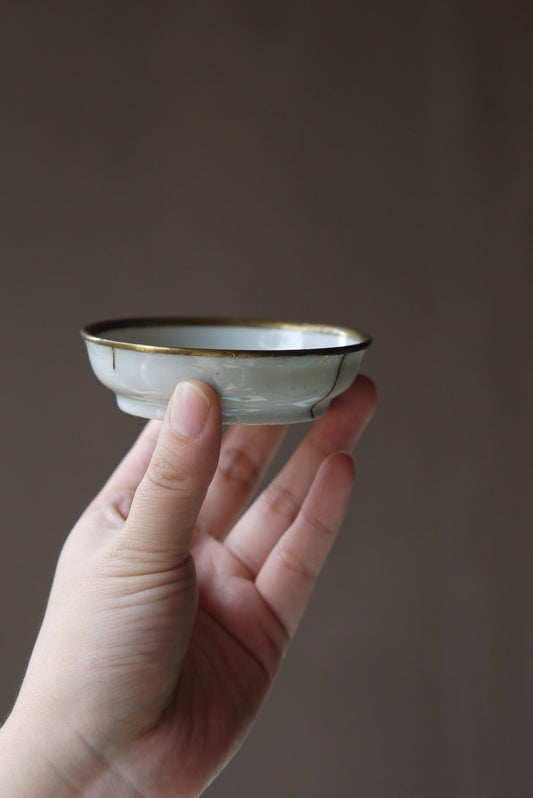
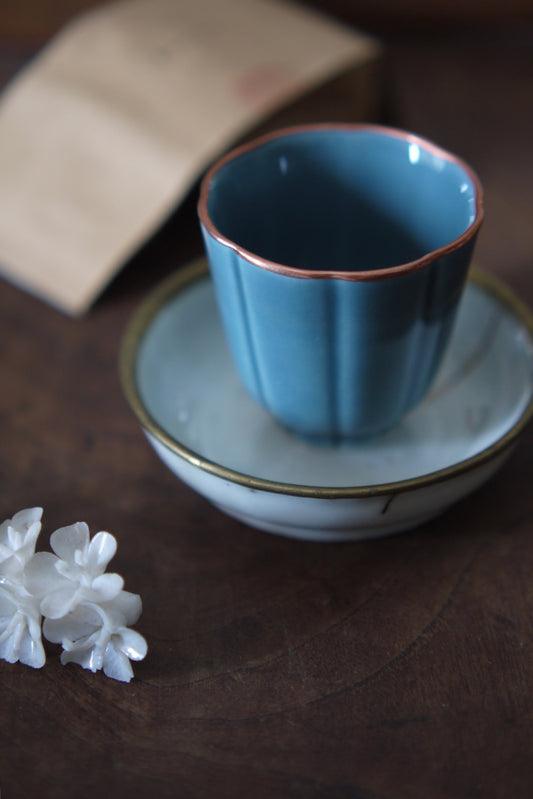 Sold out
Sold outBeen-green Charm
Regular price $69.00 USDRegular price -
Silver Tea Tray
Regular price $199.00 USDRegular price -
Zen Serenity Porcelain Teapot
Regular price $269.00 USDRegular price -
Poetic Serenity Teapot
Regular price $269.00 USDRegular price -
Jade Porcelain Landscape Teacup
Regular price $99.00 USDRegular price -
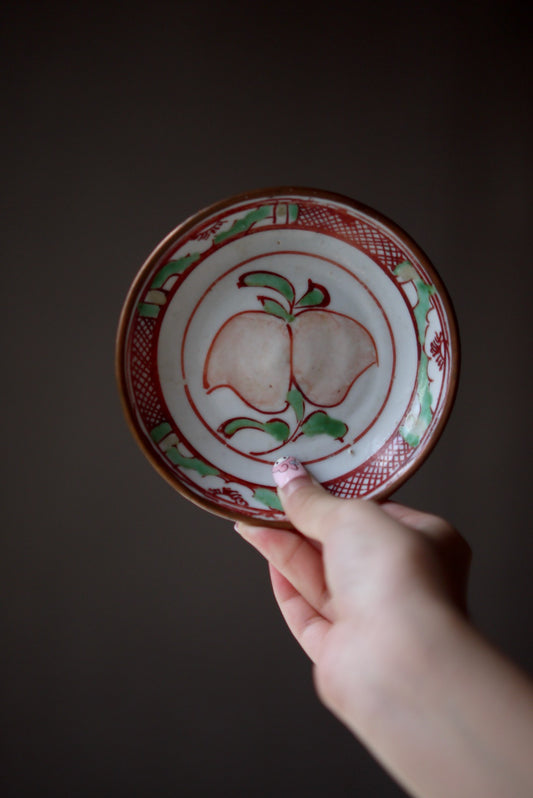
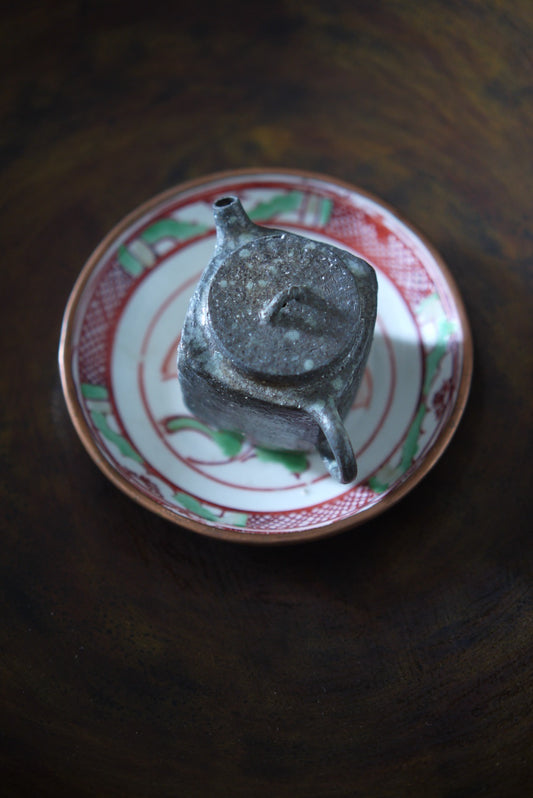 Sale
SaleAncient Pot Support
Regular price $139.00 USDRegular price$269.00 USDSale price $139.00 USDSale -
Ming Dynasty Plum Blossom Cup
Regular price $299.00 USDRegular price$450.00 USDSale price $299.00 USDSale -
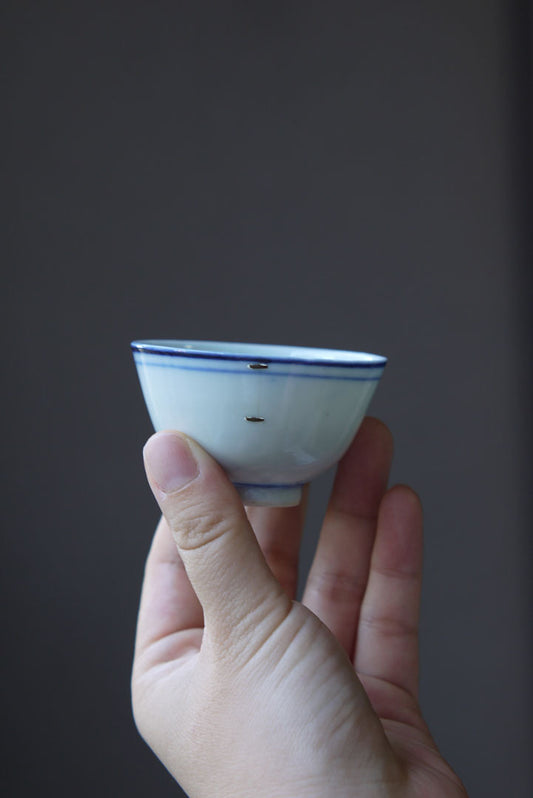
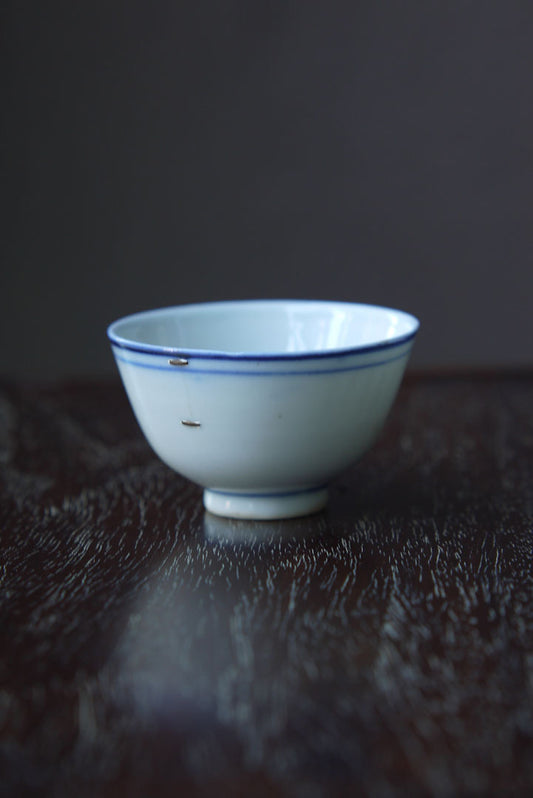 Sale
SaleTeacup with Staples
Regular price $96.00 USDRegular price$169.00 USDSale price $96.00 USDSale -
Antique Painting Teacups
Regular price $95.00 USDRegular price$169.00 USDSale price $95.00 USDSale -
Vintage Lacquerware Tea Scoop
Regular price $299.00 USDRegular price -
Ruoshen Kungfu Teacup
Regular price $459.00 USDRegular price$599.00 USDSale price $459.00 USDSale -
Copper Rim Teapot
Regular price $179.00 USDRegular price -
Copper Rims Teacups
Regular price $169.00 USDRegular price -
Black Lacquer Tea Tray
Regular price $299.00 USDRegular price -
Vintage Lacquer Tea Tray
Regular price $299.00 USDRegular price -
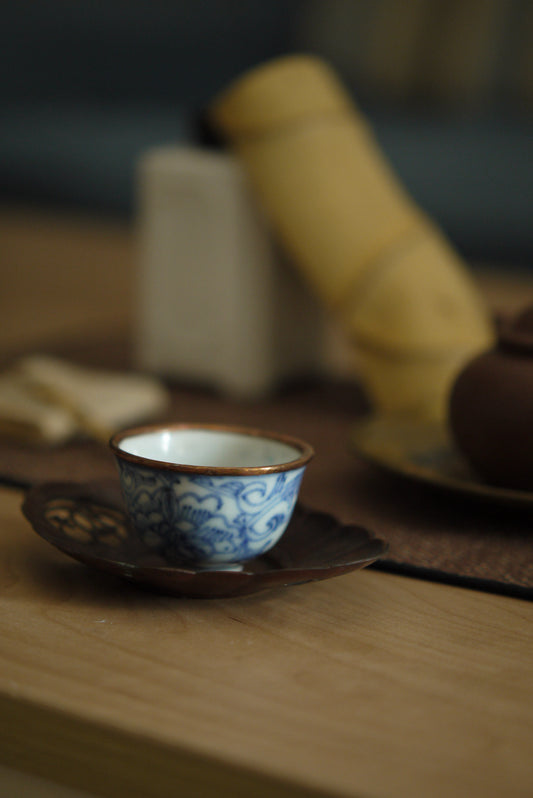
 Sold out
Sold outAncient Teacup
Regular price From $96.00 USDRegular price
You May Like To Learn
What is “Kou”?
“Kou” is an ancient oriental Chinese decorative technique that involves wrapping the rim of teacups with precious metals such as gold, silver, or copper. This method not only enhances the aesthetic appeal of the teacup but also adds a touch of tradition and sophistication to your tea experience. The “Kou” technique is a meticulous process that requires skill and precision, ensuring each piece is unique and rich in cultural heritage.
Does the metal rim affect the usability (e.g. for tea / food)? Is it safe?
Yes — in most cases, a properly executed metal-rimmed piece remains functional and suitable for tea or food. Metal banding does not inherently interfere with the vessel’s utility, provided the construction was well done and there are no cracks or gaps at the joint.
However, care is recommended: avoid long soaking, sudden temperature extremes (very hot or cold liquids), and strong blows to the rim — such stress may loosen the metal rim over time.
Why add a metal rim? What are the benefits?
- Strength & Durability: The metal band reinforces the rim or foot, reducing risk of chipping or cracking from impact or repeated use.
- Protects Vulnerable Edges: Ceramic rims are often the most fragile part of a vessel; metal rim helps protect them over time.
- Aesthetic & Value: A metal rim adds visual elegance, a touch of luxury, and reflects traditional craftsmanship — increasing the piece’s collectible appeal and status.
Are all broken or chipped ceramics / lacquerware suitable for Kou repair?
No — Kou repair works best when the fragments align well and the body/glaze of the vessel is still intact and compatible with metal banding. If the rim or body is extremely thin, severely shattered, or the glaze surface resists bonding, traditional metal-rim repair may not be reliable or safe.
Furthermore, modern “quick fixes” using resins or adhesives may restore shape, but they typically do not match the durability, authenticity, or historical value of traditional metal rim work — and may not be suitable for food / drink use.
How to care for and maintain metal-rimmed pottery / lacquerware?
- Hand-wash gently with soft sponge or cloth, avoid harsh scrubbers that may scratch or loosen metal edges.
- Do not soak for long periods; dry thoroughly after washing to prevent moisture from accumulating at metal-ceramic junctions.
- Avoid sudden temperature changes (e.g. pouring boiling water into a cold vessel), which may stress the glaze-metal interface.
- When storing or stacking, put soft padding between pieces to avoid metal edges bumping against each other and scratching.
Does metal banding affect the value / collectability of the piece?
In many cases, yes. Metal-rimmed vessels — especially when the metal work is done by skilled artisans using high-quality materials (like silver, copper, or alloy) — are often valued higher for their added durability, beauty, and craftsmanship. The metal rim also signals intentional repair or enhancement, which can increase historical and aesthetic appeal (especially if done in traditional style).
However, if the metal rim is added in a crude, poorly matched, or low-quality manner, it can diminish the vessel’s original aesthetic integrity, lower its value, or even make it unsuitable for serious collectors. The craftsmanship behind the rim truly makes all the difference.
Is Kou-釦 considered a sustainable / restorative craft?
Yes. By reinforcing and restoring damaged or fragile ceramics, Kou-釦 prolongs the life of existing pieces instead of discarding them. This aligns with heritage craft philosophy — valuing longevity, repair, and reuse, rather than disposability.
It also preserves the history and character of the original piece, while adding new layers of meaning and function.
Does “Kou” Require Glue?
No, “Kou” does not require the use of glue. The metal is carefully wrapped around the rim of the teacup, forming a secure and tight fit. This technique relies on the natural properties of the metal and the craftsmanship involved, ensuring that the metal stays in place without any adhesive. The absence of glue also means that the purity of the materials is maintained, preserving the integrity and authenticity of the piece.
How to Maintain Your “Kou” Products?
Maintaining your “Kou” products is simple, yet it requires care to preserve their beauty and longevity. Here are some tips:
- Cleaning: Gently hand wash your “Kou” teacups with warm water and a soft cloth. Avoid using abrasive cleaners or scrubbing pads, as they may scratch the metal or porcelain.
- Drying: After washing, dry the teacup immediately with a soft cloth to prevent water spots or oxidation on the metal rim. Avoid leaving the teacup to air dry.
- Storage: Store your “Kou” teacups in a dry, cool place, away from direct sunlight. Prolonged exposure to sunlight can cause the metal to tarnish or discolor over time.
- Handling: Handle your “Kou” teacups with care. The metal rim, while secure, can be delicate. Avoid dropping or knocking the teacup against hard surfaces to prevent dents or damage.
Additional Tips
- Metal Oxidation: It’s natural for metals like silver and copper to oxidize over time, which may result in color changes. For example, silver may darken, and copper may develop a deeper, richer tone. This oxidation is a normal process and adds character to the piece.
- Polishing: If you prefer the metal to maintain its original luster, you can gently polish the rim with a soft cloth, such as velvet, to restore its shine. However, avoid using metal polishes that contain harsh chemicals, as they might damage the finish.
- Tea Stains: The smooth surface of the “Kou” teacups is designed to resist tea stains, but if any develop, use a mild baking soda solution to clean them without affecting the metal or porcelain. Regular cleaning around the area where the metal meets the porcelain will also help keep the cup in pristine condition.
By following these care instructions, your “Kou” teacups will remain beautiful and functional for years, adding elegance to your tea rituals. The uniqueness of each “Kou” piece makes it more than just a teacup—it’s a piece of art that embodies the rich tradition of Chinese craftsmanship.




